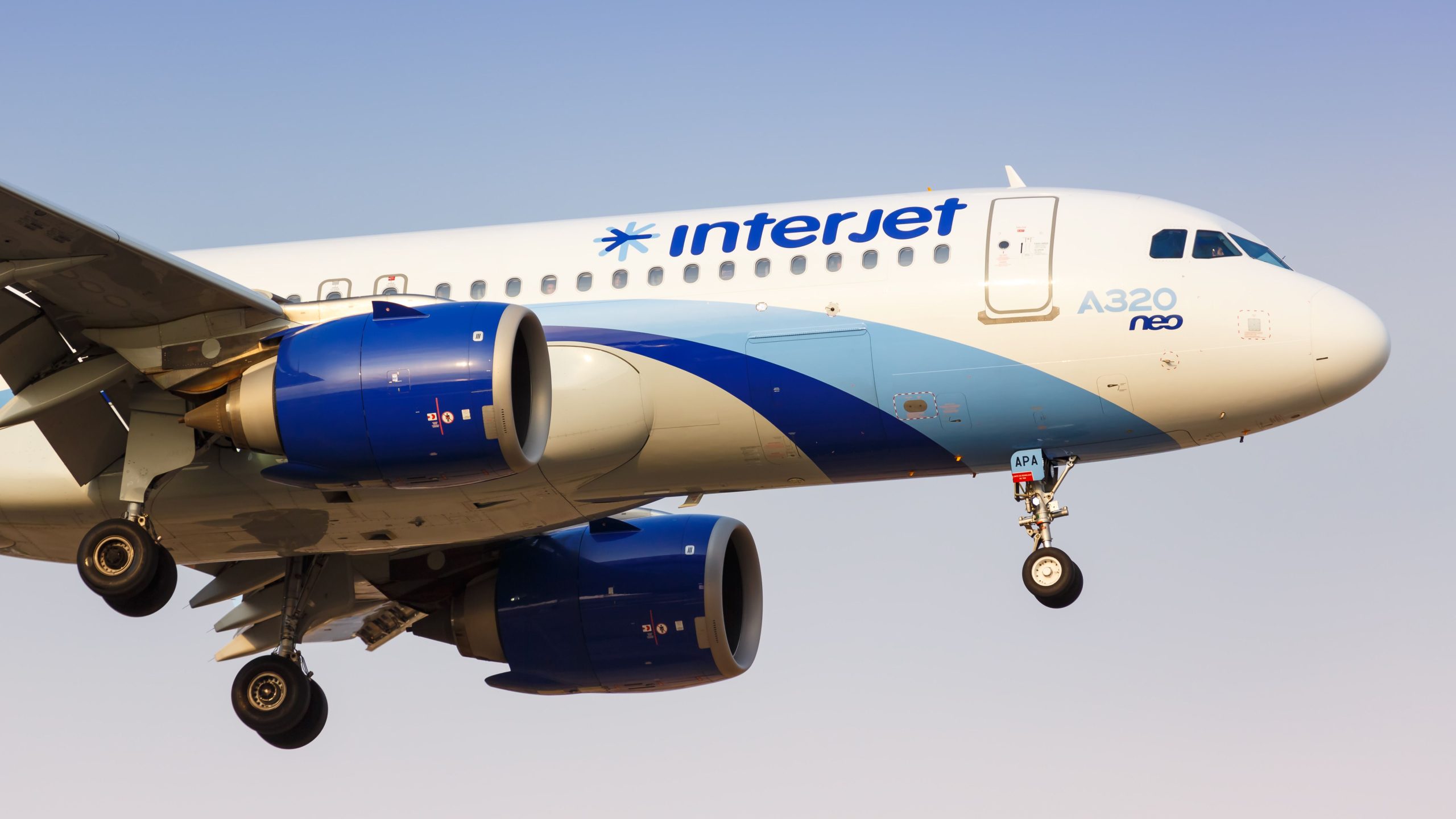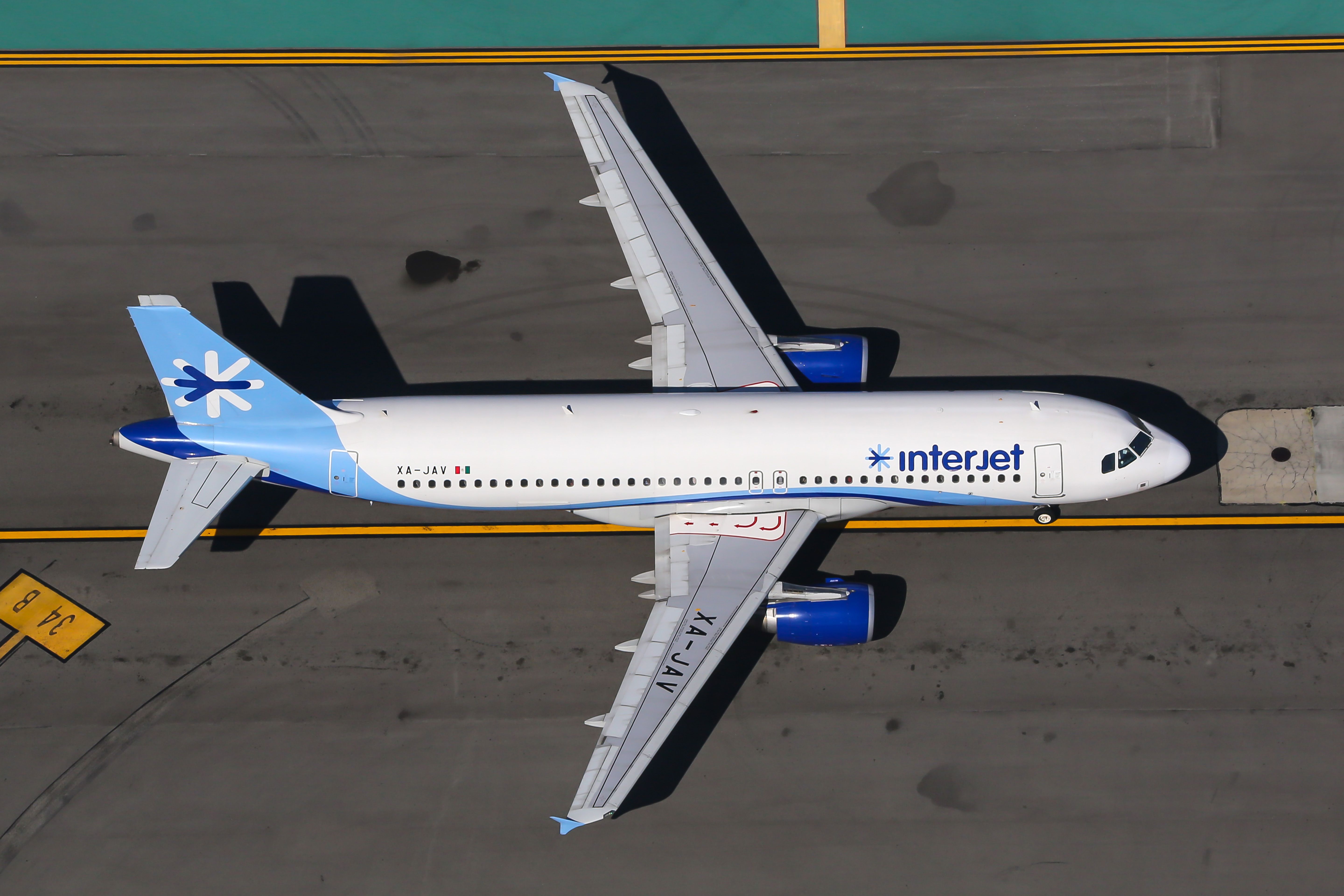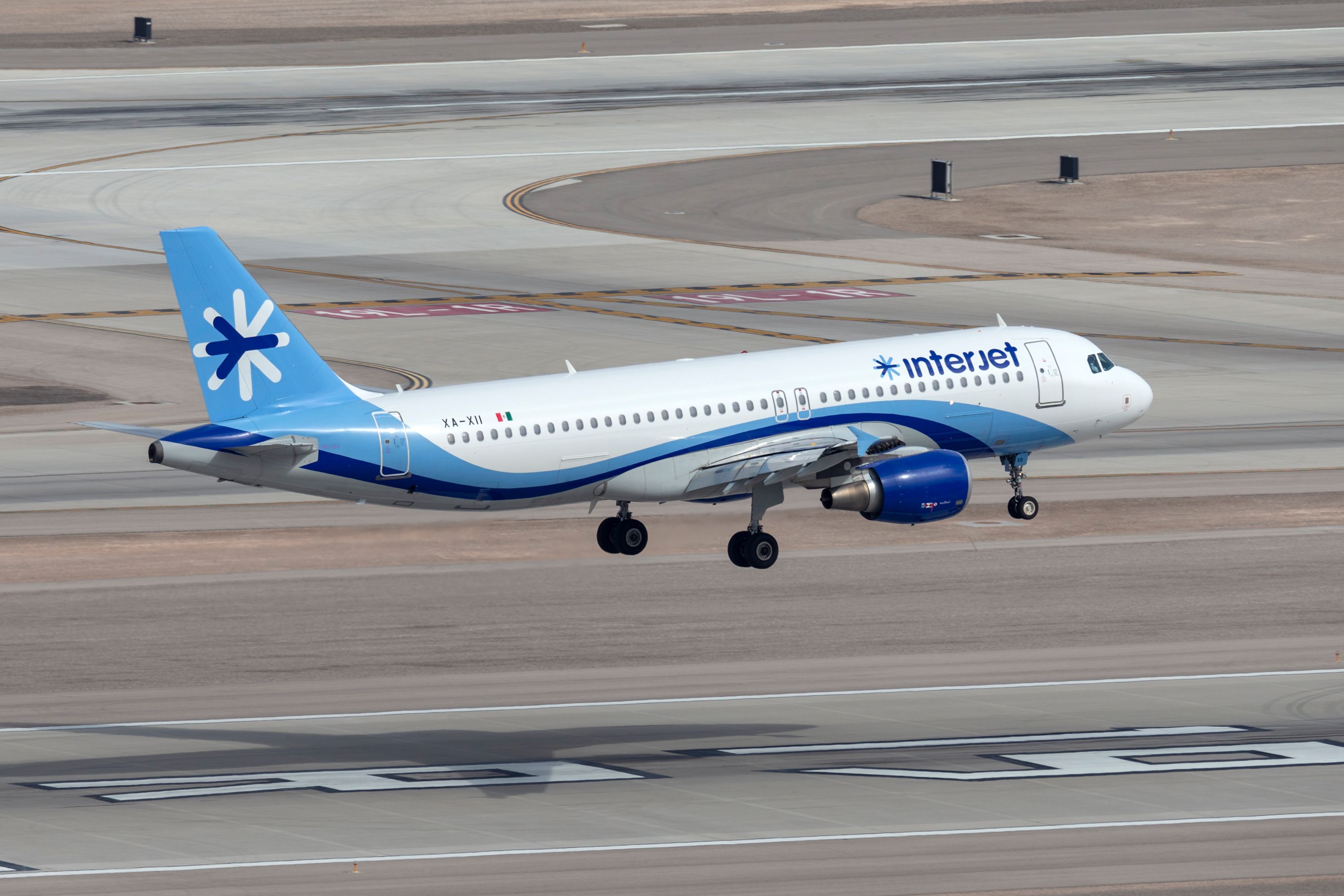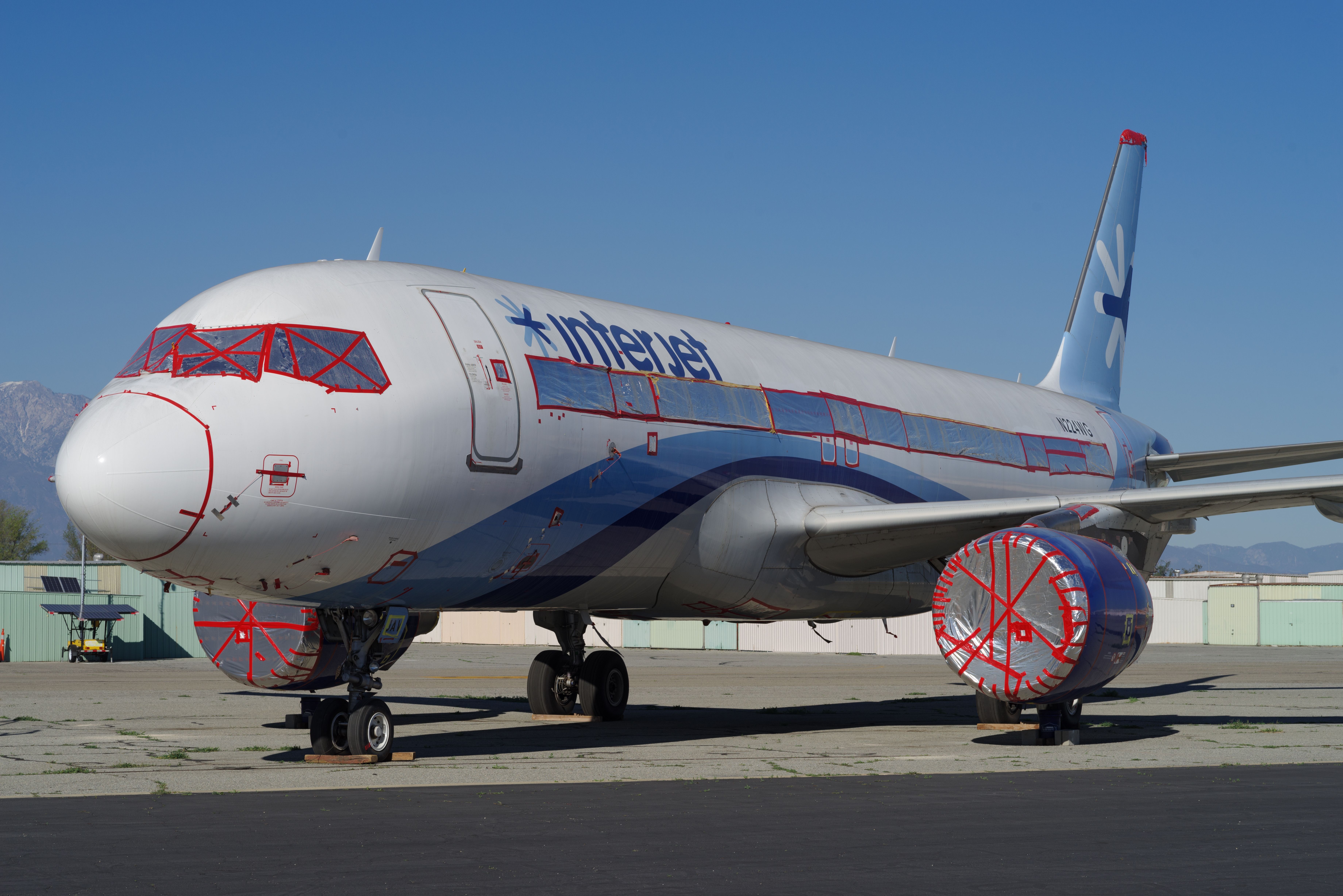Summary
- Interjet was a popular Mexican airline known for its low-cost fares and full-service onboard experience.
- The airline faced competition from established carriers like Aeromexico and Mexicana, as well as new low-cost airlines Volaris and Viva Aerobus.
- Interjet’s troubles were compounded by its decision to acquire Sukhoi Superjet planes in 2011, which came with maintenance issues and a lack of spares.
The Mexican carrier Interjet operated between December 2005 and December 2020. It was a highly popular airline among Mexican travelers, offering low-cost fares and full-service-like onboard service flying with a mix of Airbus A320 and Sukhoi Superjet 100-family-based aircraft. But what was its history like, and how did it end up ceasing operations? Let’s find out.
Beginnings of Interjet
Interjet’s history began when it was founded by businessmen of the Alemán family in 2005. Miguel Alemán Velasco and Miguel Alemán Magnani, two prominent individuals and son and grandson of a former Mexican president, were interested in opening a new carrier that could compete against long-time companies Aeromexico and Mexicana.
Right about the same time, Volaris and Viva Aerobus began operating. Volaris launched flights in March 2006 and Viva Aerobus in November 2006. Of these new-century trio, only Interjet has ceased operations since. The remaining two have been highly successful, particularly after the COVID-19 pandemic.
Photo: Markus Mainka/Shutterstock.
Nonetheless, the new trio faced an uphill battle in those early years. The Mexican aviation industry had two heavy titans in Grupo Aeromexico and Mexicana de Aviación, and there was a long and painful history of small carriers folding (such as TAESA Airlines, AeroCancún, and Aerofiesta before 2005 and AeroCalifornia, Aviacsa and Líneas Aéreas Azteca after 2005).
Mexicana and Aeromexico operated from Mexico City International Airport (MEX), holding most available slots. Therefore, Interjet and Volaris began their service out of Toluca International Airport (TLC), while Viva Aerobus utilized Monterrey International (MTY) as its hub.
During its first year of operations, Interjet transported over 1.25 million passengers. It used a fleet of seven Airbus A320 that previously flew with Volare Airlines in Italy. Domestically, in just that year, it was the fourth most important carrier in Mexico, proving that it had a business model that could be effective.
The business model
Interjet launched operations as a low-cost airline. The carrier disrupted the market, along with Viva Aerobus and Volaris. Consequently, the fares in the country dropped, and even Mexicana felt the pressure, responding by launching its low-cost subsidiary, Mexicana Click. Besides the known low-cost traits, Interjet offered a few unique ideas during its first years. For instance, it launched Club Interjet, a loyalty program.
It took the airline three years to be profitable. By 2011, it was already the second-largest operator in the country after Mexicana de Aviación ceased operations in August 2010. In its origins, Interjet looked like JetBlue. Nevertheless, the Mexican carrier eventually drifted from its low-cost principles.
The Sukhoi debacle
In 2011, Interjet inked an order to acquire up to 30 Sukhoi Superjet SSJ100d. The original order was for 15 Russian-built planes, for a total cost of US$650 million. At the time, the deal was graded as a bargain for Interjet and a good move for Sukhoi, as it was entering a new market in the Americas.
Photo: Ryan Fletcher/Shutterstock.
Unfortunately, Interjet only ever received 22 Sukhoi planes. And they came with many issues. One was the lack of spares. The airline never got a reliable flux of maintenance equipment and cannibalized some of its airplanes to keep the rest flying.
In the meantime, Interjet expanded its reach. It started operating flights into the US, Canada, and some countries in South America. By 2019, it connected over 80 destinations in ten American countries. It had a 50-50 distribution between domestic and international cities served.
Financial woes
The Sukhoi fleet isn’t the only thing responsible for Interjet’s troubles. According to the Mexican Government, Interjet stopped paying taxes in 2013, building up an unpayable debt.
The airline offered incredibly low fares, but onboard, it drifted farther away from the low-cost theory, aiming to compete comfortably with Aeromexico. Many passengers graded Interjet’s service as the best among the top four Mexican airlines. They look back fondly at their service. But it came at a cost.
Since 2013, the airline was only profitable in 2013, 2015, and 2016, according to its financial results. Between 2017 and the first quarter of 2019, the airline had a total net loss of 4.16 billion pesos (over US$211 million). The airline didn’t publish its financial results for the remainder of its history.
The COVID-19 pandemic put an end to the airline
Since 2020, many Latin American airlines have folded operations. We have seen the bankruptcies and disappearances of Aeromar, Viva Air, Ultra Air, TAME, LATAM Argentina, Avianca Peru, Itapemirim Transportes Aéreos, Amaszonas, and, the latest, Equair. Interjet was the first victim in December 2020.
At the beginning of 2020, Interjet attempted a “Hail Mary” to save itself. It aimed to eliminate its Sukhoi jets to focus on an all-Airbus fleet while pushing its US connectivity. But it was too late.
Photo: Angel DiBilio/Shutterstock.
When the pandemic arrived in Mexico in March, leasing companies started repossessing Interjet’s fleet. It went from having 66 Airbus aircraft to zero in months. The airline had to bring back the Sukhoi and operate a reduced route map. Eventually, money ran out, and Interjet couldn’t afford to pay for fuel. Interjet stopped flying on December 11, 2020. It was formally declared bankrupt in April 2023, putting an official end to its history.
The Sukhoi fleet remained grounded in Mexico, particularly at the Toluca International Airport. Interjet’s former Airbus fleet has been going around, flying for customers worldwide. One of these planes still flew with the Interjet livery early in 2023. This plane, operating for Pakistan International Airlines, was never repainted, which led to a curious-looking Interjet-liveried aircraft flying routes such as Quetta-Islamabad and Lahore-Dammam, giving the Mexican carrier unforeseen visibility.
Did you ever fly with Interjet? How did you find the experience? Let us know in the comments below.




